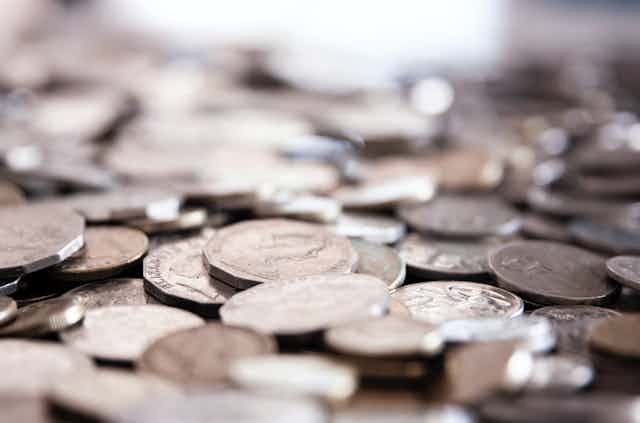Giving kids pocket money can be a really challenging decision for families. It raises questions about when to start it, how much to give and whether it should be tied to chores.
As a finance researcher and parent, it’s also important to view pocket money as an educational opportunity. You can use it to teach children how to make informed financial decisions, set meaningful goals and develop responsible spending habits.
Here’s how you can approach it.
When should you start?
There is no one “right age” but you could reasonably consider pocket money when children start school and begin learning to add and subtract.
This means your child will be old enough to start grasping concepts like saving and spending.
As your child grows, you can move on from basic arithmetic and tailor your discussions to what your child is learning in maths.

How much should it be?
How much you give will depend on your family situation and finances.
A useful starting point is working out what the pocket money will be used for. Is it simply to give your child a bit of autonomy over spending (for example, buying an ice block from the canteen)?. Is it to try to save for something special? Or is it to be used for all entertainment, clothes and on-trend desires like fancy water bottles?
A long-held rule of thumb is giving $1 per week relating to your child’s age (so $5 for a five-year-old). But of course amounts tying pocket money to a child’s raw age may not work with today’s economic conditions. Three years ago, $10 bought a lot more than it does today.
Of course you will also need to consider pocket money within the context of your wider household budget. Down the track, there’s nothing wrong with talking to your child about adjusting their pocket money if your household budget needs changing.
Read more: How do I tell my kids we are currently short on money – without freaking them out?
Cash or direct debit?
When your child is little, giving them pocket money in cash is a good way to help them start to understand money. It’s something they can see and hold in their hands.
As they get older and the amounts get larger, direct debits will become more convenient and can teach them about handling their money online.
Since getting your hands on cash is difficult these days, when they’re young you can also give your kids pocket money electronically but give them monopoly money or a similar representative of what they have earned. You can then progress to a spreadsheet as they get older.
What about tying it to chores?
Many parents like to provide pocket money in exchange for chores as they feel it might instil a work ethic in their kids and the idea you don’t get money for nothing.
If you are tying pocket money to chores, be very clear about what will be done for what money and when chores need to be reviewed. Follow-through is important for this structure to be effective, so if they don’t do the work, they don’t get paid. You can also give them bonuses for jobs that are particularly well done.
Personally, I find this process to be more work for parents than it’s worth. I prefer the children to simply help around the house because it’s a core family value rather than tying it to finances.

The bigger picture
However you structure pocket money in your family, it’s important to consider it an opportunity to learn about finances.
You might start with simple discussions around “do I have enough money to buy this packet of textas and that toy car?” or “how many weeks until I can afford that book?”. Then as your child develops, you can introduce concepts such as cash flow, interest rates and banking products.
For example, cash flow lessons can start with talking about the importance of spending less than you earn.
Teaching kids about goals
Pocket money is also a fantastic way to help kids learn how to save. Help them set a realistic goal to save up for something that matters to them. A pair of sneakers they want or a particular video game is likely to be more achievable than a new bike. This will help motivate and challenge your child, without overwhelming them.
As your child gets older, you can introduce more sophisticated notions of saving and funds.
For example, when my child started high school we talked about setting up an emergency fund. As she was going to catch buses, we worked out the fund should be $50 (based on missing the bus and needing a taxi home). This became her new “baseline” before spending on non-essential items such as food from the school canteen.
Barefoot Investor author Scott Pape recommends starting with physical buckets with “splurge” for every day little things, “save” for big goals, “give” for acts of kindness and “grow” for investing.

Shopping skills
Once your child has their own money to spend, a trip to the shops takes on a whole new significance.
Smart shopping is not just about comparing prices or where to find the best bargains. It is also learning what is worth spending your money on and when.
You can talk to your child about what they value and their emotional responses around buying decisions. For example, “how long was it before the excitement of your new T-shirt wore off?” Or “Did you feel differently when you spent your money on going to that movie (an experience) versus that box of Lego (a tangible product)?”
Read more: We don't need banks teaching kids about money. Schools have it covered
There are lots of things to consider (and no perfect formula) when it comes to pocket money. But if it means you can integrate financial skills into everyday life, it’s a fantastic investment in your kids’ education.

